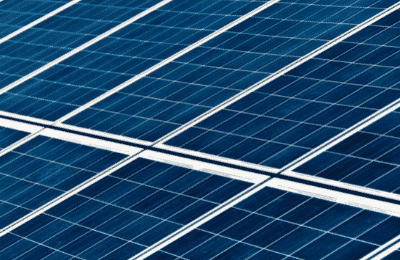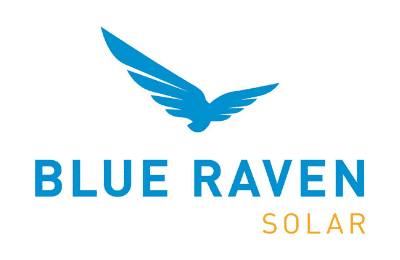
Pennsylvania Solar Incentives (Rebates, Tax Credits & More in 2024)
In this guide to saving money on your solar power system by taking advantage of incentives in Pennsylvania, you’ll learn:
- What incentives for solar conversion are available in Pennsylvania?
- How do the solar benefit programs in Pennsylvania affect the local cost of going solar?
- What solar incentives in Pennsylvania are the most valuable and beneficial?
Each product and or company featured here has been independently selected by the writer. You can learn more about our review methodology here. If you make a purchase using the links included, we may earn commission.
Do Pennsylvania Solar Incentives Make It Affordable for Homeowners to Go Solar?
Yes, the local solar perks in the Keystone State make a significant difference in your effective conversion costs.
The typical cost of a photovoltaic (PV) system in Pennsylvania is around $27,710, which is based on the average cost per watt for equipment — below the national average at $3.26 — and the typical system size required in the area — also below the U.S. average at 8.5 kilowatts (kW).
The total price to go solar in the area is about $3,000 below what most Americans pay, but it’s still unrealistic for most homeowners to shell out over $27,000 for PV panels.
Although the state lacks a current Renewable Portfolio Standard (RPS) goal, there is still a decent number of incentives available to make solar more affordable and accessible. Including local perks, the state has more incentive programs than most others. Combined, these can save you thousands of dollars on your system.

Paradise Energy Solutions

Regional Service
Average cost
Pros
- Outstanding customer service
- Many years of experience
- Offers products from leading manufacturers
- Slightly limited service offerings
Cons
- Great warranty coverage
- No leases or PPAs

Blue Raven Solar
Pros
- Industry-leading in-house financing
- Competitive pricing
- Excellent reputation
Cons
- Doesn't offer solar batteries (coming 2022)

YellowLite

Regional Service
Average cost
Pros
- Representatives are experts on local policies
- Offers products from leading manufacturers
- Full-service home energy solutions
Cons
- No leases or PPAs
- Relatively short workmanship warranty
In the table below, we’ll include a list of the available incentives in your area, including a brief description of each. We’ll also provide the average savings each benefit typically offers in the state.
| Solar Incentives in Pennsylvania | Incentive Type | Description | Occurrence | Estimated Dollar Amount You Can Receive |
| Federal Solar Investment Tax Credit (ITC) | Federal | This perk guarantees that 30% of your system installation costs gets credited to your income tax liability | One-time: Applies once when you file your taxes after installation, but remaining credit can be used for up to five years total. | $8,313, on average in PA |
| Solar Renewable Energy Certificates (SRECs) | State | You earn certificates for all solar production (one credit per 1,000 kilowatt-hours generated). You can sell certificates for a profit | Ongoing: SRECs continue to accrue for as long as your panels generate electricity. | $8,000, on average, over the life of your system |
| Net Metering | Local | Offers electric bill credits for all excess energy your system generates and sends to the power grid | Always in Effect: Your net energy metering credits will accrue for as long as your panels continue producing power | Varies based on system size, monthly electric bills and more |
| Local Incentives | Local | Solar rebates and other incentives offered by local utility companies, cities and other municipalities | Varies depending on the perk | Varies based on the incentive, your system size and more |
What Do Pennsylvanians Need to Know About the Federal Solar Tax Credit?
The federal solar credit is an outstanding solar perk, and it’s made available to all U.S. residents by the federal government. It incentivizes solar adoption by offering a tax credit in the amount of 30% of your system installation costs. That amount is applied to any income taxes you owe.
Given the typical solar system cost of $27,710 in your area, the credit usually totals around $8,313. If you owe more than $8,313 to the Internal Revenue Service (IRS) for the year you install your system, then your tax bill will be reduced by the credit amount. If you install batteries with your system, which we expect to be the norm in Pennsylvania in the future (more on why later), that credit could increase by an average of between $3,300 and $6,600.
This perk has been offered since 2005. The credit rate dropped to 26% in 2022, and it was scheduled to drop further to 22% in 2023 and then go away entirely in 2024. However, the Inflation Reduction Act (IRA) bumped the credit rate for these years back up to 30% and pushed the program’s expiration date to 2035.
The new rate schedule is below:
- 30% for system installations taking place between 2022 and 2032
- 26% for system installations occurring in 2033
- 22% for systems installed in 2034
- The program will no longer be available in 2035
How to Claim the Federal ITC in Pennsylvania
Taking advantage of the federal credit requires minimal effort on your part, which is great news and makes this perk all the more worthwhile. You can follow the steps below to make sure you get access to the credit.
- Step 1: Print out IRS form 5695. This is the form for reporting clean energy and energy efficiency credit eligibility to the IRS.
- Step 2: Fill out the form when you’re ready to file your taxes. You’ll need some basic information about your system and the company that carried out the installation. All in all, you should be able to complete the form in under ten minutes.
- Step 3: Submit the completed form alongside your tax filing.
If you use a program like HR Block or TurboTax to file your taxes, the software should prompt you automatically for information on solar conversion. Just be sure to answer that you did complete a solar installation or energy efficiency home improvement, and then answer the relevant questions that follow.
EcoWatch’s Opinion on the Federal ITC in Pennsylvania
In our opinion, this is the premier solar perk available to residents, and it’s the one we recommend taking over all others if you only have time to apply for one.
Not only is this incentive available to all taxpayers, but it only takes a few minutes to take advantage of, and the potential value you get — an average of around $8,313 — is unmatched by any other solar benefit program in the area.
We should mention that this incentive cannot fully be taken advantage of if you don’t owe money on your income taxes. No tax liability leaves you with an unclaimable credit. You’ll need to owe an average of $1,662 per year for five years following your home solar conversion to be able to take the entire credit.
Finally, the ITC applies to batteries also, which is likely to become more relevant in the future. The reason is because net metering policies have been in decline throughout the country, most notably with the adoption of net metering 3.0 in California, which decreased the credit rate for net metering by around 75%.
We expect other states, including Pennsylvania, to follow California’s lead in the coming years. That would mean that the only way to see effective net metering and, potentially, to see net savings over time, would be to install batteries alongside your panels. That would lead to the ITC being worth an additional $3,300 to $6,600, given that the average cost of batteries is between $10,000 and $20,000.
Watch Below: How Well Will Your Solar Panels Still Work When Covered In Snow?
What You Should Know About Pennsylvania’s SREC Program
The local SREC program — also called the Solar Alternative Energy Credit program or the Solar Renewable Energy Credits program — offers credits for all of the solar energy your panels produce. You’ll earn one energy certificate for every 1,000 kilowatt-hours (kWh) — or 1 megawatt (MW) — you generate.
The credits can be sold on the active SREC market in the state, with an average value of about $40 each. The typical system in your area should produce just under 1,000 kWh per month and earn around ten credits per year.
At the average price of $40 each, that’s an annual total of $320. Over the 25 years your system is expected to hold value and generate electricity, that’s a total of $8,000 you’re expected to earn from selling credits.
As such, this perk can effectively pay for about a third of your entire system cost, although you’ll slowly get that money back from selling credits each year. Credits will vary in value over time.
How to Enroll in the SREC Program in Pennsylvania
Making sure you get access to the local SREC program is pretty simple and won’t take much time. You can follow the steps below to enroll.
- Step 1: Head over to the Pennsylvania Public Utilities Commission (PUC) website for information on the Alternative Energy Portfolio Standards Act and the SREC program it mandates in the state.
- Step 2: Click on “Create an Account.”
- Step 3: Complete the application process, which includes basic information about you and your home.
- Step 4: Complete your solar installation process.
- Step 5: You’ll be contacted by a program administrator that will help walk you through the rest of the process. You’ll need to provide some information about your system and your installation company, but the entire process should take just a few minutes.
EcoWatch’s Opinion on The SREC Program in the State of Pennsylvania
Energy certificate programs are some of our favorite perks throughout the country. They serve to legitimize solar energy as a valid renewable energy source and provide effective savings for Pennsylvania residents at the same time.
Our favorite things about the SREC program in your area are the ease with which you can apply and the long-term effective savings you can see. You’ll spend just a few minutes applying for the program, and you’ll sell your accrued credits for an average of around $8,000 over the lifespan of your system.
We should note that these programs exist in many other states as well and, unfortunately, some states are seeing changes to SREC programs for the worse. Some states — even those with active RPS goals — are opting into a block program, which caps the number of participants. This could happen in your area in the future as well, so don’t count on SREC values remaining consistent with time.
Net Metering in Pennsylvania

Net energy metering (NEM) provides a few key benefits, including pushing your long-term energy savings higher, increasing the value your panels add to your property and reducing the panel payback period.
The state mandates NEM for all investor-owned utilities (IOUs), which means customers of companies like Duquesne Light Company, FirstEnergy (Penn Power) and Pennsylvania Electric Company (PECO) are guaranteed access to this perk.
The PUC also requires that energy credits are offered at the full retail value for electricity, which is great news and maximizes your solar savings from this incentive. At the end of the year, your excess credits are reconciled at the “price to compare,” which is below the retail value. As such, you’ll benefit most from sizing your system appropriately for your home and not upsizing too much.
We should mention that while net metering is currently an outstanding perk in your area, it could be abandoned in the future. Just like with SRECs, many states are seeing decreases in NEM rates and programs disappearing entirely. There is no plan in place for this to happen in the Keystone State, but there’s always the chance that it will. If you manage to install your system before any changes, you’ll likely be grandfathered into the new policy. If not, you’ll likely see installation costs increase by up to $20,000 or more with the inclusion of solar batteries.
How to Enroll in Net Metering in Pennsylvania
Making sure you take advantage of net metering is an easy process, and for many residents, it won’t require any effort aside from organizing your solar installation. Below, we’ll discuss the steps you can take to make sure you’re set up for NEM.
- Step 1: We first recommend contacting your electric utility provider to confirm that you have a bidirectional meter installed. Interconnection is only possible through this type of meter. You can get one installed for free if your home hasn’t already been upgraded to this meter type.
- Step 2: Confirm that your electric company offers net energy metering. If you are serviced by an IOU, you don’t have to check, but we do recommend confirming the credit rate. Some electric cooperatives and public utility companies also offer NEM but aren’t obligated to do so. We suggest you call to confirm availability and the rate if you’re serviced by one of these providers.
- Step 3: Contact a local solar panel installation company and ask the sales rep to confirm that they will enroll you in NEM.
- Step 4: Complete the installation process.
- Step 5: Monitor your energy bills for a month or two and make sure that your credits are posting as expected. You should see a breakdown of energy in, energy out and the credits earned for each billing period.
EcoWatch’s Opinion on Net Metering in Pennsylvania
Net energy metering is one of our favorite solar perks in the country. It helps customers in your area reach that average lifetime energy savings of $39,508, and that’s after the program helps pay off your system entirely. NEM is especially beneficial because most residents won’t need to spend any time enrolling in the program.
We are concerned that the NEM policy will get downgraded in Pennsylvania, as it has in many other states. But for now, it’s a great perk to take advantage of and get grandfathered into before it does change for the worse.
Local Solar Incentives in Pennsylvania

- City of Philadelphia Solar Rebate Program: This is a rebate offered to all Philly residents. The rebate is for $0.20 per watt installed for residential customers or $0.10 per watt installed for commercial solar customers. For residents, the average system size of 8.5 kW would yield a rebate of $1,700.1
- City of Philadelphia Streamlined Solar Permitting and Fee Reduction: This perk is also offered to Philly residents looking to convert to solar. It guarantees an expedited permitting process and cuts application fees to reduce the upfront cost of going solar.
There were no other local perks for solar, in particular, at the time of writing. However, you can contact your utility company or check DSIRE (Database of State Incentives for Renewables & Efficiency) for information on rebates for other energy efficiency upgrades.
Which Tax Incentives Are The Best In Pennsylvania?
Above, we’ve mentioned all of the perks available for solar conversion in your area. There are some of these financial incentives that are more valuable overall to residents, so we’ll include our top picks for solar incentives in PA below.
The Federal Tax Credit
The federal credit takes just a few minutes and a single form to apply for, but the return on that investment is massive. The typical credit amount — and potential effective savings — is just over $8,300. Plus, unlike some of the local perks, this incentive is available to all residents.
Net Energy Metering
Net energy metering is another incentive we strongly suggest you don’t miss out on if it’s available to you. This program requires a short application filed with your electricity provider, which is well worth the time it takes to complete. However, most of the reliable solar installers in the state will file the form for you, making the process automatic.
This perk provides massive value to solar customers who can take it—anyone who is a customer of an investor-owned utility (IOU). It can help pay off your system more quickly than the average ten years, and it pushes your long-term savings closer to or above the local average of $39,508.
The potential savings make this one of our favorite perks in the area, despite it not being available to all residents. Keep in mind, also, that this incentive will likely get downgraded or disappear in the future as more and more states have seen in recent history. Going solar now and ensuring you lock in the current perk is highly beneficial.
SRECs
Finally, we suggest you take advantage of the SREC program in the state. You’ll spend just a few minutes applying to this perk as well, and yet it can effectively save you over $8,000 over the lifespan of your system. Savings aren’t immediate, but they can help reduce your effective electricity rates each year your panels generate power.
What Pennsylvanians Need To Know About SRECs?
As mentioned above, every solar customer in the state will earn energy certificates for every 1,000 kWh their system generates, regardless of how that power is used. You can sell the certificates you earn on the local market, usually for an average of around $40. They’re purchased by energy companies looking to offset fossil fuel sourcing and reduce their contribution to climate change.
Generally speaking, most residents will earn around ten credits per year.
Are SRECs taxable in Pennsylvania?
Yes, SRECs are taxable. You’ll need to report the value of the credits you earn and sell when filing your income taxes after solar conversion.
What’s The Near Term Outlook For More Incentives In Pennsylvania?
The only change in state incentives that is definite in the near future is the discontinuation of the solar rebate program in Philadelphia. This is set to end on 12/31/2024.2
Although there are no other plans in place for incentive programs to improve, become less beneficial or disappear, the likelihood is that the state will see some additional incentive downgrades in the coming years. This is pure speculation, but it’s based on the fact that the RPS goal expired in 2021 and has yet to be reinstated.
If negative changes do occur, we’d expect to see net energy metering and SRECs take a hit.
Since NEM is only mandated to be offered by IOUs, the possible negative changes include the policy becoming entirely optional or the program going away entirely. Other states are seeing this issue, and we believe it’s only a matter of time before Pennsylvanians see a downturn in credit value.
It’s more likely that we’ll see the SREC program diminish in some way in the nearer future, as companies are currently not required to buy SRECs to meet an active RPS goal. We could see the program disappear altogether or the per-credit rate go down as demand decreases over the next few years.
The cost information presented in this article is derived from a comprehensive analysis, incorporating data from multiple industry sources. The average cost per watt per state was calculated based on figures from Consumer Affairs, Energy Sage, and Berkeley Lab’s Electricity Markets & Policy Department. Additionally, monthly energy consumption and the average monthly cost of electricity were sourced from the U.S. Energy Information Administration, ensuring a well-rounded and accurate representation of the information presented.
FAQ
Below, we’ll provide answers to the most common questions we see about incentives and rebate programs available for PV systems in your area.
At this time, there is nothing to suggest that we’ll see new or increasing incentives in the next two years. Unfortunately, the state’s RPS goal expired in 2021, and a new one hasn’t been set yet. Since this goal drives the adoption and improvement of incentives, we may not see any new or improved perks until a new goal is set.
The Inflation Reduction Act (IRA) extended the federal credit by ten years to 2034 and set up a new rate reduction schedule that included an increased credit value of 30% for 2022-2032. The credit will drop to 26% in 2033, 22% in 2034 and 0% in 2035.
The IRA also improved tax credits for some electric vehicles (EVs). The new maximum credit amount is $7,500, although the rate depends on the make and model, as well as where it was manufactured.
Unfortunately, yes. The solar rebate available to Philly residents will end on 12/31/2024. Although this is the only perk that’s scheduled to disappear, we do foresee others getting less beneficial or going away entirely.
Specifically, we believe the net energy metering policy and the SREC program are in danger of disappearing in the next two years or at least becoming less appealing. This is largely due to the state’s RPS goal expiring in 2021, which is at least expected to make the value of SRECs go down. It could lead to a decrease in NEM as well, as many states are seeing.
Unfortunately, no, the state doesn’t offer an exemption for sales or property taxes. That means your property taxes will increase after converting to solar due to the bump in home value, and you’ll have to pay the state sales tax on all components of your solar panel system.
Related articles
Top Solar Installers in Pennsylvania Cities
Comparing authorized solar partners
-
- Outstanding customer service
- Many years of experience
- Offers products from leading manufacturers
- Slightly limited service offerings
- Great warranty coverage
- No leases or PPAs
A+Solar Veteran
Having trouble deciding? Click below and use our process to receive multiple quotes instead:

 233k
233k  41k
41k  Subscribe
Subscribe 



